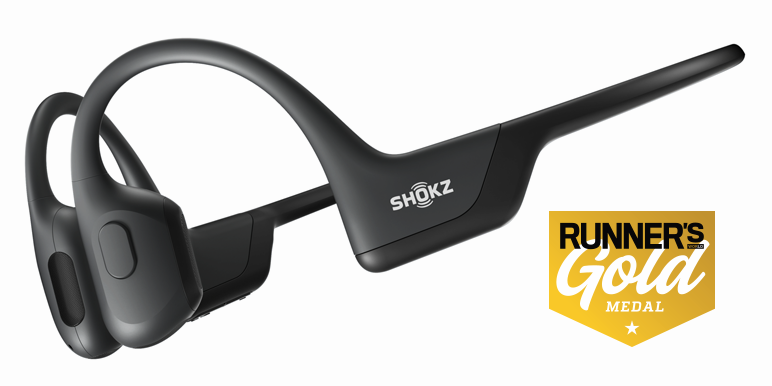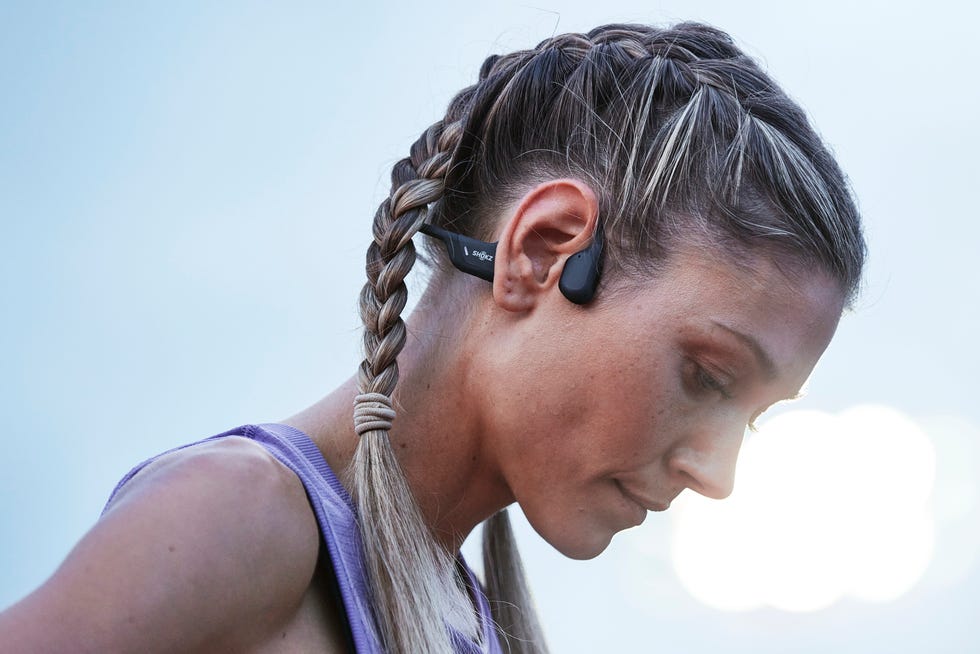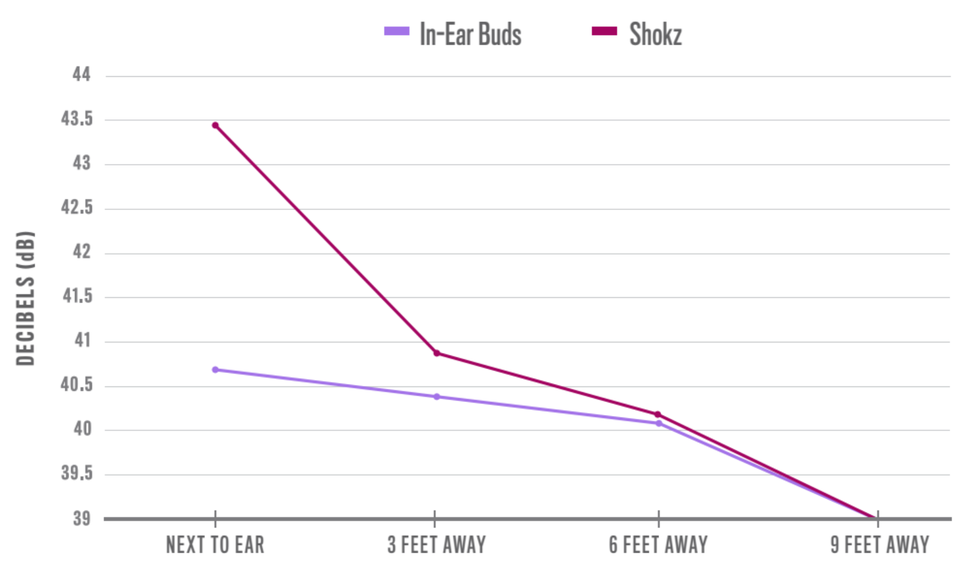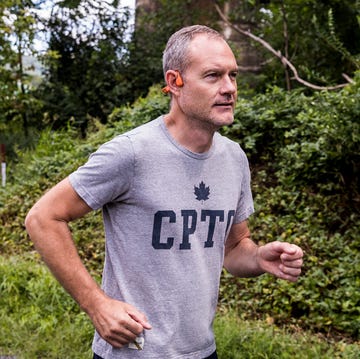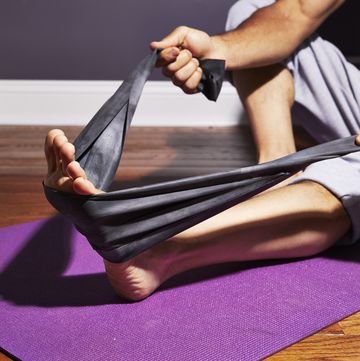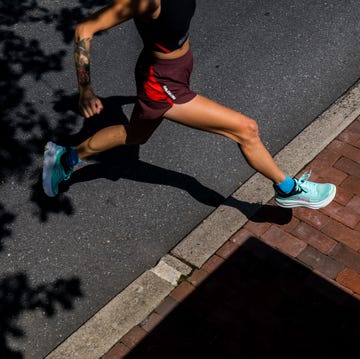Bone-conduction headphones transmit sound vibrations through the cheekbones. Unlike with traditional earbuds, the sound bypasses the eardrum but is still heard in the cochlea. It may seem like voodoo, but you’ve likely already used the concept without even knowing it. Try this: Plug your ears and hum. You can still hear your voice, right? That’s because the sound waves are traveling through your skull and reaching your inner ear.
Shokz, formerly AfterShokz, is the biggest player in the bone-conduction space right now. A longtime fan of the tech, Runner-in-Chief Jeff Dengate shared his thoughts on the latest model, the OpenRun Pro.
Key Specs
The RW Takeaway: Your ears are completely uncovered, so you can hear the world around you and stay safer on your run. For that reason, they’re the best headphones you can wear for running. Bar none.
- Weight: 29 grams
- Dust and Water Resistance: IP55
- Battery Life: 10 hours
- Time to Full Charge: 1 hour
- Connectivity: Bluetooth 5.1
A seemingly minor update to the old Aeropex (now called OpenRun), the Pro is actually a big step forward for bone-conduction headphones. The sound has been improved thanks to ‘bass enhancers,’ which definitely make the audio louder and a bit deeper—you can feel the pads vibrate against your skin when you crank up the volume. On a run in the city while listening to a podcast, I still had trouble hearing the guest anytime a car passed—he was talking into a cellphone, so the audio levels were already compromised. But with music, I haven’t experienced any difficulty.
The Pro features a 10-hour battery, up from the 8 hours on the OpenRun, and a 5-minute charge will give you 1.5 hours of listening time. Another nice update is that the buttons to turn the volume up or down have been enlarged, which I especially enjoy when wearing gloves. My lone gripe is the button on the left speaker. Click it once to pause, or twice to skip the track. I find it lacks any tactile feedback, so I’m more often than not pausing the music rather than skipping ahead to the next song.
Will Other People Be Able to Hear My Music?
One common question runners usually have about bone-conduction headphones is if other people will be able to hear their music or podcasts. During testing, we found that this can depend on how well the phones actually fit on your head. For example, if you aren’t wearing them properly, there’s a greater chance that more sound will leak out and be audible to those around you. The standard OpenRun comes in a mini version to accommodate those with smaller noggins. That said, we didn’t have any major issues with the fit in our test model, so we were able to accurately assess how much noise your coworkers and run crew are likely to overhear.
Using a decibel meter, we measured how much sound could be heard from Shokz headphones compared to the buds with a standard in-ear style. We measured from a variety of distances. The results showed that there is a slight difference; Shokz ’phones will likely be a little noisier. This makes sense, considering there isn’t a tight seal around the ear canal that you’ll get from those other buds. However, the difference is negligible.
Our testing showed only a 2.8 decibel increase between the noise that could be overheard between Shokz and in-ear style buds. For reference, normal breathing comes in at about 10 decibels. The threshold of human hearing is right above zero decibels—that’s akin to the volume of a falling leaf hitting the ground. The difference between Shokz and the buds you’re likely using right now is right around 0.5 decibels at three feet, somewhere between that leaf and a drip from a leaky faucet. If you and your friend are standing more than six feet apart, the difference in noise level is indistinguishable.
Jeff is Runner-in-Chief for Runner’s World and the director of product testing. He has tested and reviewed running shoes, GPS watches, headphones, apparel, and more for nearly two decades. He regularly tests more than 100 pairs of shoes each year, and once had a 257-day streak running in different models. Jeff can usually be found on the roads, racing anything from the mile to a marathon, but he also enjoys racing up mountains and on snowshoes. When he’s not running, you’ll probably find him hanging from a ladder making repairs and renovations to his house (he’s also director of product testing for Popular Mechanics).

Morgan is a gear editor who has been with Runner’s World since 2017. She started as an intern ghostwriting The Warmup, a bygone version of the daily RW newsletter. Now, she tests and reviews anything you might find on runners’ feet-from crew socks and compression boots to carbon-plated super shoes.
A lifelong runner and shoe geek, Morgan has been chasing the perfect pair of kicks since she joined her grade school cross-country team. Since then, she ran as a Division I walk-on for the cross-country and track & field teams at the University of Delaware, where she studied English and Biology. She has one full marathon under her belt, and has raced more halfs and 5Ks than she can count.

